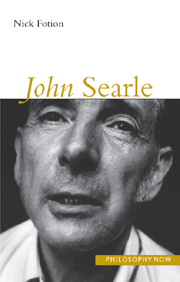2 - Searle's taxonomic theory
from Part I - Philosophy of language
Summary
Twelve ways that illocutionary acts differ
How, one might wonder, can a taxonomy of speech acts be both interesting and important? It might seem more appropriate to call it boring, since the business of classifying any set of phenomena or objects is normally thought of as mechanical and hardly a challenge to the imagination. And it might also seem unimportant since Searle has already put much of his speech act theory in place. Developing a taxonomy for such acts seems, therefore, somewhat akin to engaging in mop-up operations in war rather than in a major battle. I will argue, to the contrary, that Searle's taxonomy is indeed interesting and that he is not engaged in mop-up operations.
Searle begins his search for a satisfactory speech act classification system or taxonomy by identifying no less than twelve ways that speech acts can differ from one another. Some of the ways or dimensions are repeats from Speech Acts, but some are new. As it turns out, the old are generally more important than the new. But all need to be identified and understood in order to avoid one or other kind of confusion about how we do things with language. Unavoidably, then, one must march tediously from the first dimension all the way through the twelfth to get a sense of what Searle wants his readers to understand about how to classify speech acts properly. If not boredom itself, the reader might be experiencing an anticipation of boredom at this point. But, keep in mind, patience is a virtue.
- Type
- Chapter
- Information
- John Searle , pp. 39 - 56Publisher: Acumen PublishingPrint publication year: 2000



